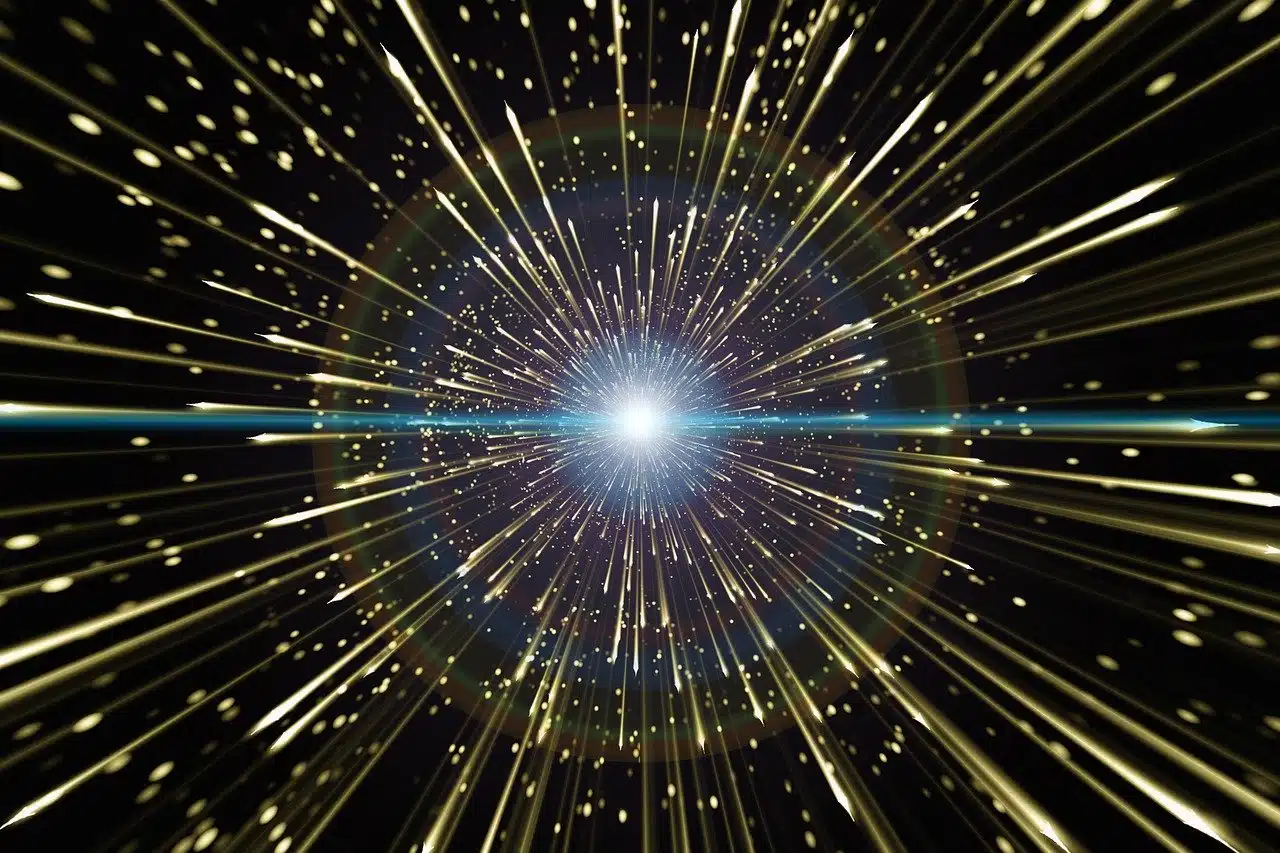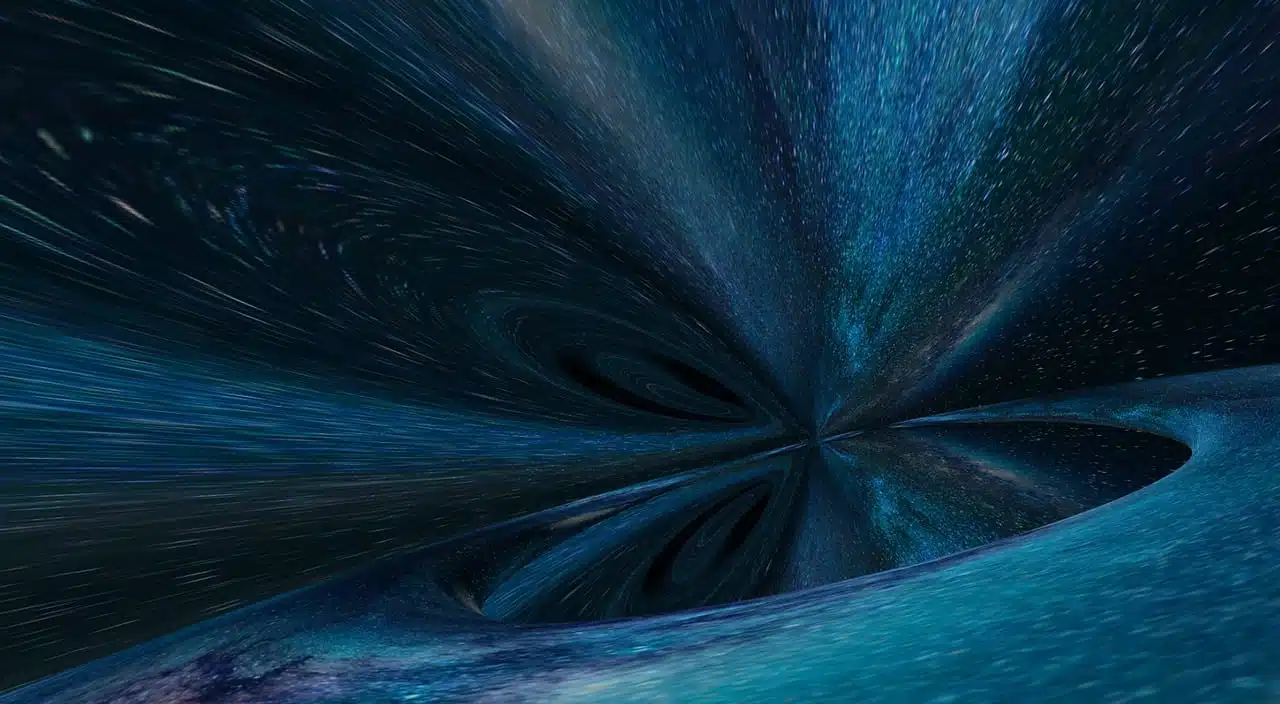
String theory falls within the field of quantum gravity .
String theory is a scientific proposition that indicates that material particles are vibrational states of a filament . This model or hypothesis contemplates that space – time has eleven dimensions; that is, seven more than the four that are usually considered (altitude, latitude and longitude plus position in time).
Depending on how these filaments or strings vibrate, quarks , photons , neutrons , electrons or protons can be seen. These subparticles, continuing the reasoning, are not points as in the standard model, but modes of vibration.
Origins of string theory
The origins of string theory are found in a work written by the American John Henry Schwarz and the Frenchman Jöel Scherk , which they published in 1974 . In this article, these physicists appealed to the existence of strings to make a description of the force of gravity , leaving aside the consideration of the so-called point particles or material points .
This string theory by Schwarz and Scherk was presented as a theory of everything , since it supposes a hypothesis that would give a single theoretical scheme to the totality of fundamental interactions. In any case, its postulates did not have much significance until the so-called first superstring revolution , which began to develop in 1984 and lasted until 1986 .
In this period, various scientists made contributions. Thus, the anomaly of type I string theory was canceled thanks to the Green-Schwarz mechanism , the heterotic string was discovered, and the Calabi-Yau variety (or Calabi-Yau spaces ) was introduced to argue that there are six compact dimensions. that allow obtaining the N=1 supersymmetry .
It is important to indicate that today there is not a single string theory, but rather several hypotheses that have certain differences between them. There is even superstring theory , which combines different string theories and introduces fermions through supersymmetry.

Some physicists believe that the expansion of the universe could be explained through string theory.
Main fundamentals
At a general level, string theory is based on the consideration of strings and not point particles as basic elements. While point particles have zero dimension , strings are objects of extended spatial dimension .
The American Edward Witten was the one who argued in 1995 that there are eleven dimensions , thus combining string theories in M theory . According to this M theory, particles are strings that vibrate at a certain frequency in space-time.
This space-time , therefore, presents the three usual spatial dimensions, the temporal dimension and six other compacted dimensions that cannot be observed. It is in this framework where the vibration of the strings occurs.
Another important idea is that of supersymmetry , a hypothetical symmetry that allows linking the properties of fermions and bosons. Thus, a fermionic particle is associated with a bosonic partner and vice versa. Supersymmetry, in addition to being key in string theory, also contributes to the explanation of dark matter .

For string theory, black holes can be represented at the quantum level as tangles.
Variants of string theory
There are five variants of string theory that emerged in the 1980s . They were then unified into M theory, which began the second superstring revolution . M theory, in addition to promoting unification through equivalences such as mirror symmetry , U duality , T duality and S duality , also provided the notion of brane , a physical entity that can occur as p-branes or d-branes depending on its characteristics.
In type I string theory , for example, there are ten dimensions in spacetime, involving strings and open and closed d-branes. Type IIA string theory , on the other hand, only considers closed d-branes and adds the gravitino (the supersymmetric pair of the graviton ).
Type IIB string theory , heterotic-O (HE) string theory and heterotic-E (HE) string theory are the other variants, each with its particularities.
The criticisms
Criticism of string theory by the scientific community is mainly based on the impossibility of contrasting the precepts with experimental data . That is why there are those who claim that string theory is not falsifiable, which means it cannot be considered scientific either.
If the new dimensions postulated by those who promoted string theory do not exist, as well as the various symmetries they found, the entire theoretical model would be failed.
The Argentine physicist, philosopher, and epistemologist Mario Bunge , for example, considered that string theory could be pseudoscientific because consistency is not enough to construct scientific knowledge. Experimental confirmation, Bunge indicated in 2006 , never came (and, at least for the moment, still has not come).
In short, as long as string theory cannot be tested experimentally, it cannot be scientifically verified, although it cannot be ruled out either. Almost half a century after its origin, this lack of experimental validation appears as its main disadvantage.
